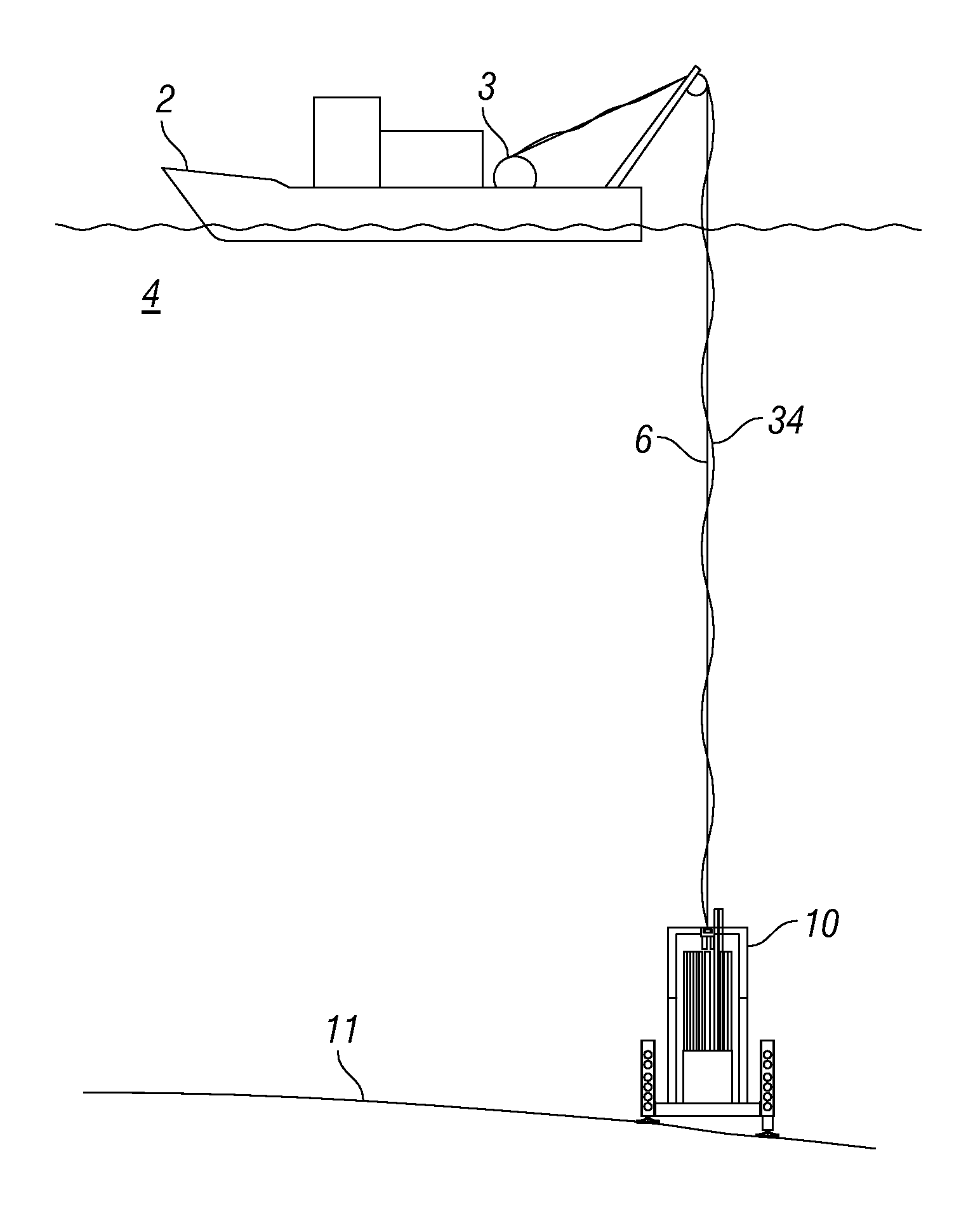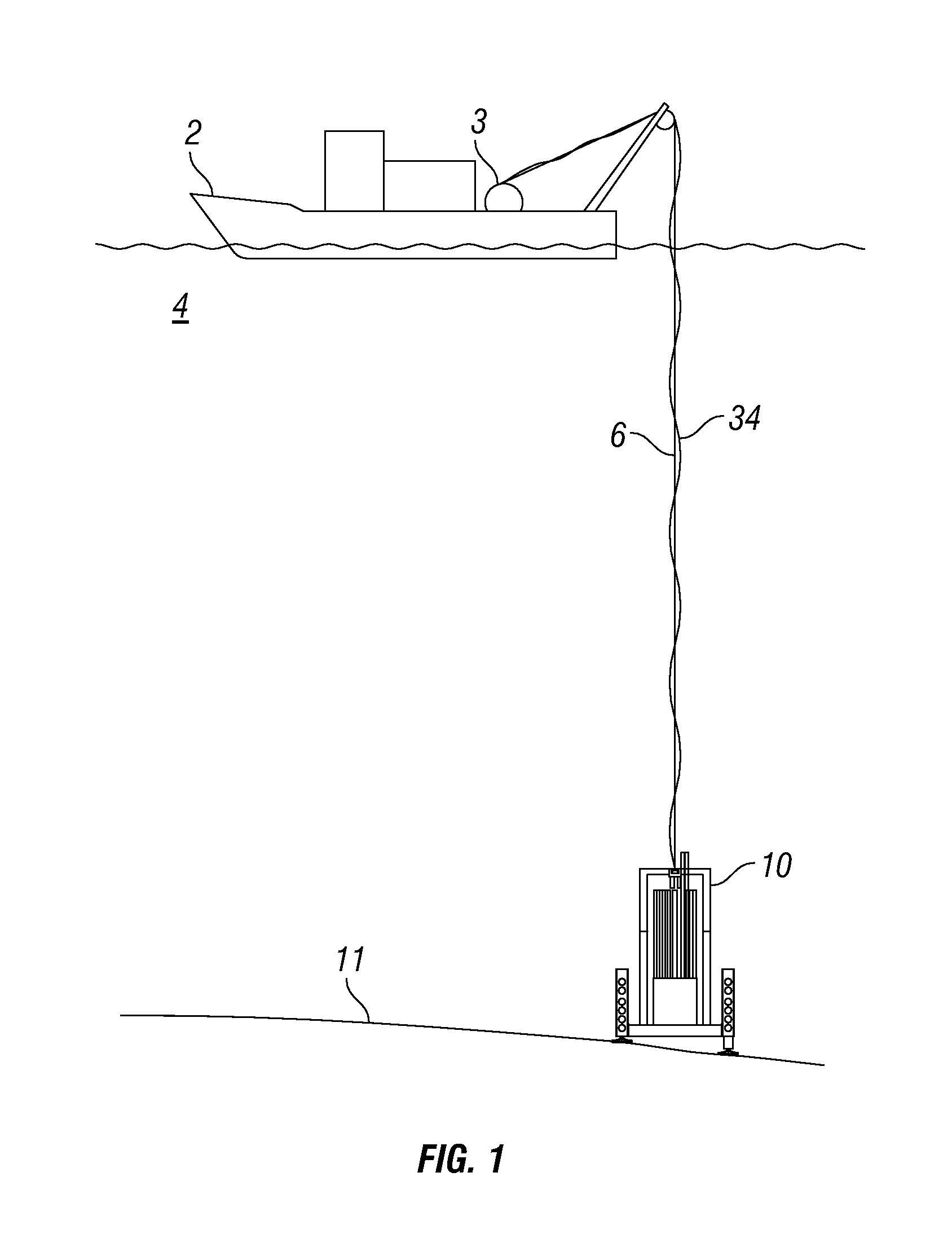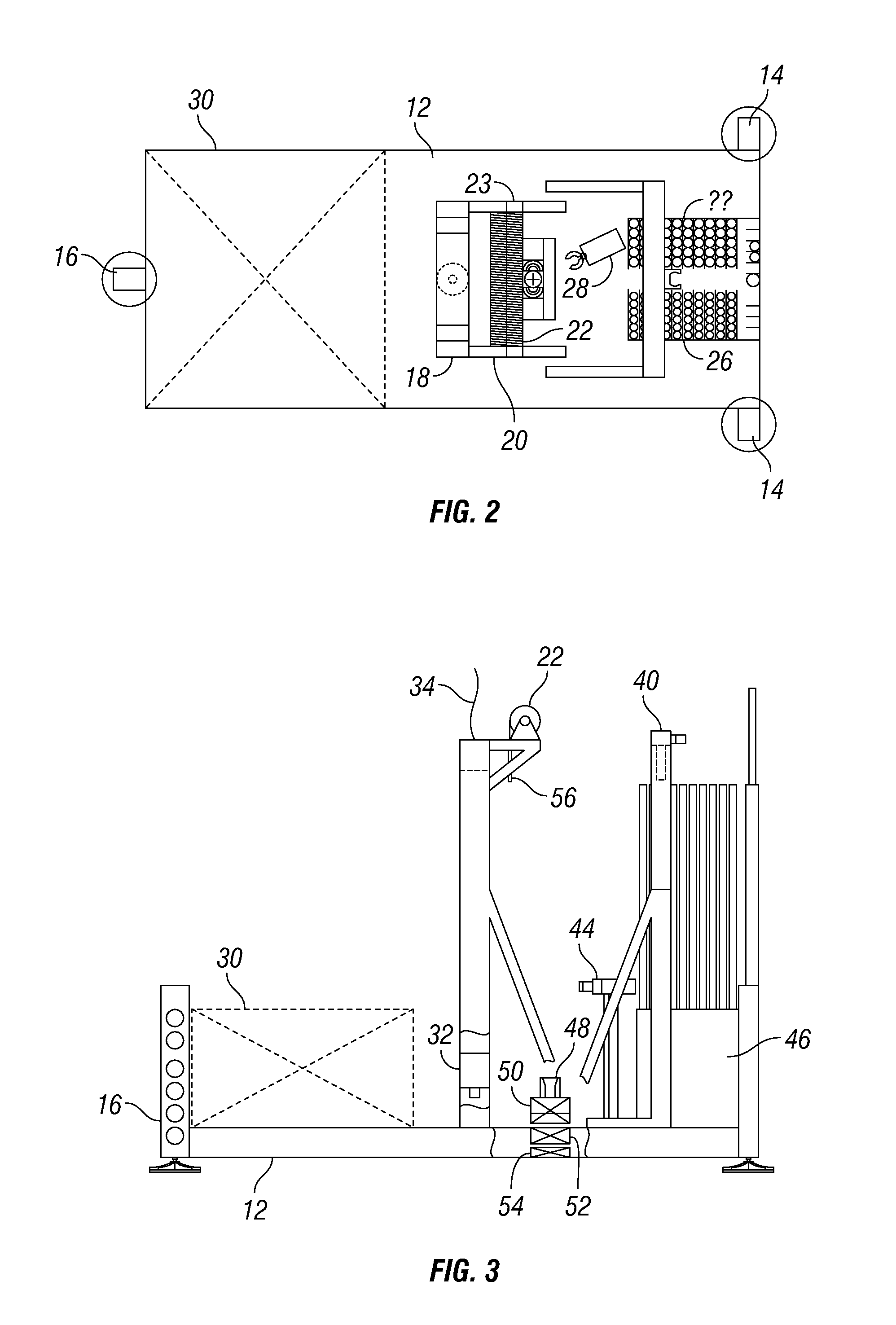Remotely operated water bottom based drilling system using cable for auxiliary operations
a remote-operated, water bottom-based technology, applied in the direction of underwater drilling, borehole/well accessories, core removal, etc., can solve the problems of limiting the water depth in which the riser is located, drilling using such risers is not well suited to drilling tasks, and the in-water weight of the riser is too large to achieve the effect of drilling
- Summary
- Abstract
- Description
- Claims
- Application Information
AI Technical Summary
Benefits of technology
Problems solved by technology
Method used
Image
Examples
Embodiment Construction
[0019]FIG. 1 shows a ship or vessel 2 having a winch 3 or similar spooling device thereon on the surface of a body of water 4 such as the ocean. The winch 3 can spool and unspool a deployment cable 6 and an umbilical cable 34 used to deploy a drilling system 10 on the bottom 11 of the body of water. The deployment cable 6 may nor may not be part of the same physical cable as the umbilical cable 34. A water bottom based drilling system 10 is deployed using the cable 6 and is caused to rest on the bottom 11 of the body of water. After drilling operations are completed, the system 10 may be retrieved and returned to the vessel 2.
[0020]A plan view of an example drilling system is shown in FIG. 2. The system 10 is mounted on a frame 12 that provides support for the various components of the system 10. The frame 12 may have support legs 14 disposed on two corners to maintain the frame 12 in suitable orientation when the system 10 is disposed on the bottom of a body of water. An adjustable...
PUM
 Login to View More
Login to View More Abstract
Description
Claims
Application Information
 Login to View More
Login to View More - R&D
- Intellectual Property
- Life Sciences
- Materials
- Tech Scout
- Unparalleled Data Quality
- Higher Quality Content
- 60% Fewer Hallucinations
Browse by: Latest US Patents, China's latest patents, Technical Efficacy Thesaurus, Application Domain, Technology Topic, Popular Technical Reports.
© 2025 PatSnap. All rights reserved.Legal|Privacy policy|Modern Slavery Act Transparency Statement|Sitemap|About US| Contact US: help@patsnap.com



